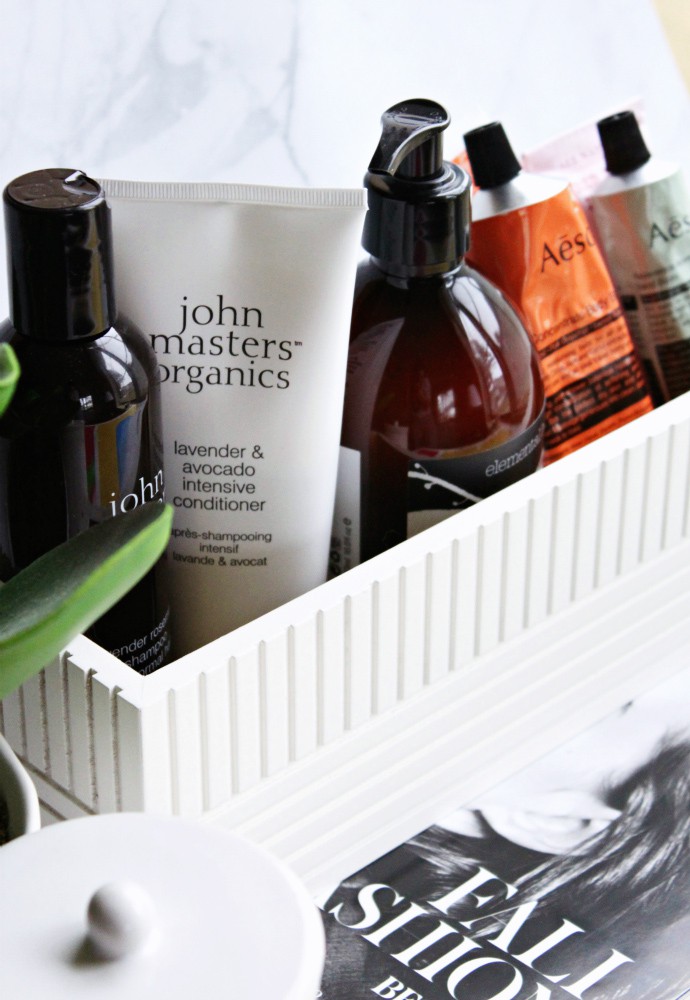
Toxic Beauty Ingredients to Avoid
I’ve been dropping hints on this blog for the past few months that I plan to do a month-long beauty experiment, but kept most of the details under wraps until this day. Now that April is finally here, I’m happy to announce that I will be sharing my thoughts – reviews, makeup looks, random lifestyle ramblings – on clean non-toxic beauty for the next several weeks. Let’s be clear, the whole thing is pretty controversial, and there are varying degrees of zealotry involved in eliminating known and potential irritants from your life. For this experiment I will be going by what EWG [Environmental Working Group] considers safe, also double-checking things with CosDNA and lists of “dirty ingredients” that directly or indirectly suggest some compounds may cause health or skin issues. Depending on my own level of enthusiasm about the whole project, I may extend it for another month. We’ll see!
Green does not equal clean, and not every chemical is bad. If you can’t pronounce it, Google it.
Now, let’s be clear that natural or green does not necessarily equal clean. I mean, arsenic is natural, but you wouldn’t put that on your face, would you? Some of the products I will be using contain lab-made chemical compounds that were proven to be safe and non-irritating, so I see no reason to eliminate those from my routine.
What ingredients are considered toxic in skincare and makeup?
So, what ingredients are considered toxic in skincare and makeup? Actually, there are a lot! This list was created using a smorgasbord of information from EWG, Paula’s Choice, CosDNA and other reputable sources that actually cite scientific studies and clinical trials to support their claims. By the way, my friend Chelsea recently started her transition to non-toxic beauty products and she is loving it so far. Check out her blog post on the list of toxic beauty ingredients she will be cautious of from now on, as it may be different from mine.
1 // Parabens. The biggest bane of all natural beauty proponents due to their potential estrogenic properties that may contribute to breast cancer. I mean, there are much worse things to be afraid of, and yet everyone is ganging up on poor parabens. To be honest, parabens are of low concern to me personally, because there are more scientific studies that prove their relative safety considering the concentrations used in cosmetics, than studies that suggest [not even prove!] potential hazards, but I will make a conscious effort to avoid them for the next month.
2 // Sulfates. These surfactants are considered to be very harsh, and in high quantities contribute to dryness, making the skin and hair lose a lot of natural protective oils. They are present in many cosmetic and household products, and are proven to be drying and sensitizing, regardless of the person’s hair and skin type. In beauty products they are most commonly found in shampoo, hand wash, body wash, and foaming facial cleansers. Not everything that lathers contains sulfates, so I will need to check the labels to make sure it’s not in the products I use. Note: The proper abbreviation for Sodium Laureth Sulfate is SLES, not SLS. I see people wrongly using it in blog posts referencing this harsh sulfate all the time. SLS stands for Sodium Lauryl Sulfate, which is a different compound [it’s even more sensitizing than SLES, actually].
3 // DBP and other phthalates. These commonly used plasticizers are said to cause respiratory issues, hormone disruptions, immunotoxicity, and even birth defects. I have eliminated nail polish with phthalates from my stash long ago, but I will need to look more closely at my other beauty products to make sure they don’t contain any. Sometimes companies try to hide the presence of phthalates in the formula by using an abbreviation. Usually it starts with a D and ends with a P, like DBP, DUP, DNPP with some exceptions like ODP, BCP, and others. They always end in P though, which stands for, as you guessed, for phthalate. Phthalates are commonly found in nail polish, hair spray, and synthetic fragrances or perfumes, where they are used as stabilizers.
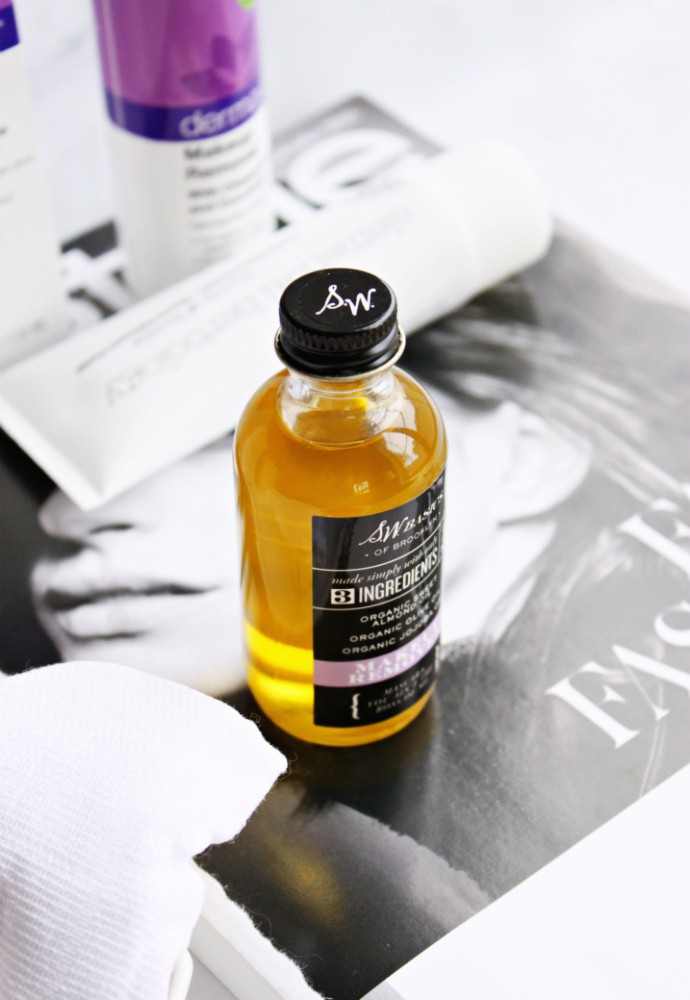
4 // Formaldehyde and formaldehyde releasers. I’ve known to avoid formaldehyde at all costs since middle school when we learned about it in chemistry class, but until recently I didn’t know that formaldehyde releasers in beauty products are nearly as bad. Formaldehyde is a known human carcinogen, and even though I’m not a green beauty blogger, I agree that it has to be banned from personal care products in all forms. Here’s a list from EWG that names the most common formaldehyde releasers to avoid:
- DMDM hydantoin
- Imidazolidinyl urea
- Diazolidinyl urea
- Quaternium-15 – Don’t mistake for polyquaternium-15, which is similar to quaternium-15, but much safer.
- Bronopol (2-bromo-2-nitropropane-1,3-diol )
- 5-Bromo-5-nitro-1,3-dioxane
- Hydroxymethylglycinate
5 // Methylisothiazolinone. Actually, Chelsea reminded me about this one! This particular molecule was proven to cause neurotoxicity in lab rats and people who experienced prolonged exposure to it either from their workspace or by using household cleaning products with that ingredient [link]. In an effort to appeal to paraben-hating crowd, companies are forced to look for other alternatives that are not necessarily safer. I’ll take parabens any day over this scary stuff, just so you know. The only semi-acceptable way of using products with this ingredient is in cleansers, body wash, liquid soap, or anything that doesn’t stay on your skin for too long, and only in concentration of 15 ppm [0.0015%] or lower. But again, how are we supposed to know that by just looking at the label?
6 // Oxybenzone. Chemical sunscreens are not ideal, but some molecules are worse than others. Usually people who follow green lifestyle choose to exclude all chemical sunblocks, but I will remove just this one, since my SPF products are already pretty clean to begin with. According to EWG, Oxybenzone is linked to the production of free radicals that can interfere with cellular signaling, cause mutations, lead to cell death and potentially cardiovascular disease.
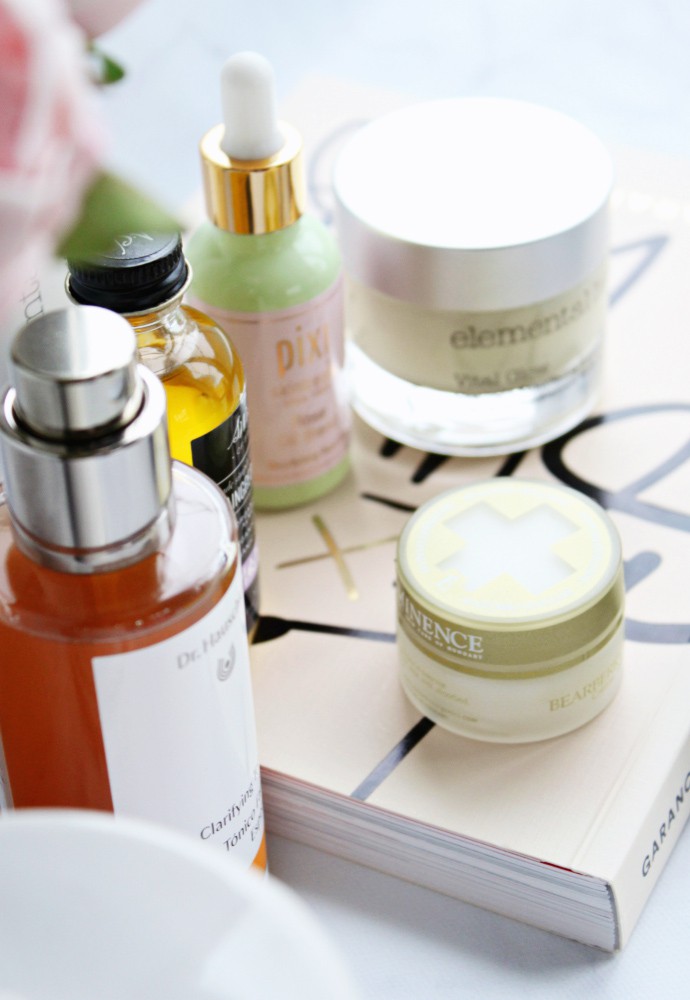
7 // Talc. This common ingredient can be easily contaminated with asbestos, which is a known human carcinogen. One look at all the baby powder lawsuits will give you a pretty good idea how bad that stuff is. Unfortunately, it’s in everything these days, especially cosmetics. Don’t quote me on this one, but I read somewhere that talc made in China has a higher probability of being contaminated, while talc made in Europe and USA is purified more thoroughly and has lower chance of containing cancer-causing asbestos particles. It makes sense, considering two recent studies from 2015 and 2016 confirmed that the amount of asbestos with the current processing technology was either non-existent or so minimal that the risk from exposure was considered insignificant. I am assuming that talc processing plants in China are a little behind on technology, and that’s why the Chinese talc powder might still contain asbestos. Anyhow, I will try to eliminate this ingredient from my routine if possible, or at least make sure the products are made in USA or Europe.
8 // Alcohol. Surprise, surprise! Alcohol is in a lot of beauty products these days, but did you know that it’s a major skin irritant? It’s the prime example of something that’s natural but not exactly good for you. Alcohol causes dehydration and local sensitivity that is not always felt or seen immediately, whether you consume it or apply topically. But don’t confuse the drying alcohols with fatty alcohols, like Cetyl Alcohol and Cetearyl Alcohol, which are actually beneficial for the skin. Now, I’m not saying to avoid Alcohol Denat in any form and shape, after all, even the purest essential oils are harmful when undiluted. In low quantities drying alcohols work as natural preservatives and don’t do much harm, if any, but when listed near the top of the ingredient list, this product should be avoided, in my opinion. Here is the list of the main offenders to watch out for:
- Ethanol
- Ethyl Alcohol
- Aenatured Alcohol
- Methanol
- Isopropyl Alcohol
- SD Alcohol
- Benzyl Alcohol
9 // Synthetic fragrance. Synthetic fragrance is in so many products that sometimes it tarnishes an otherwise great formula. I’ll be honest with you, I’m pretty lenient about this one, but I probably shouldn’t be. After all, synthetic fragrances go unregulated by the FDA and may contain any amount of harmful substances, like the aforementioned phthalates and other junk. Fragrance is the main cause of skin and respiratory sensitivities in beauty products. Natural fragrance is sometimes frowned upon, too, mostly because fragrant essential oils can be sensitizing, but I will be keeping mine since my skin doesn’t have a reaction to natural oils.
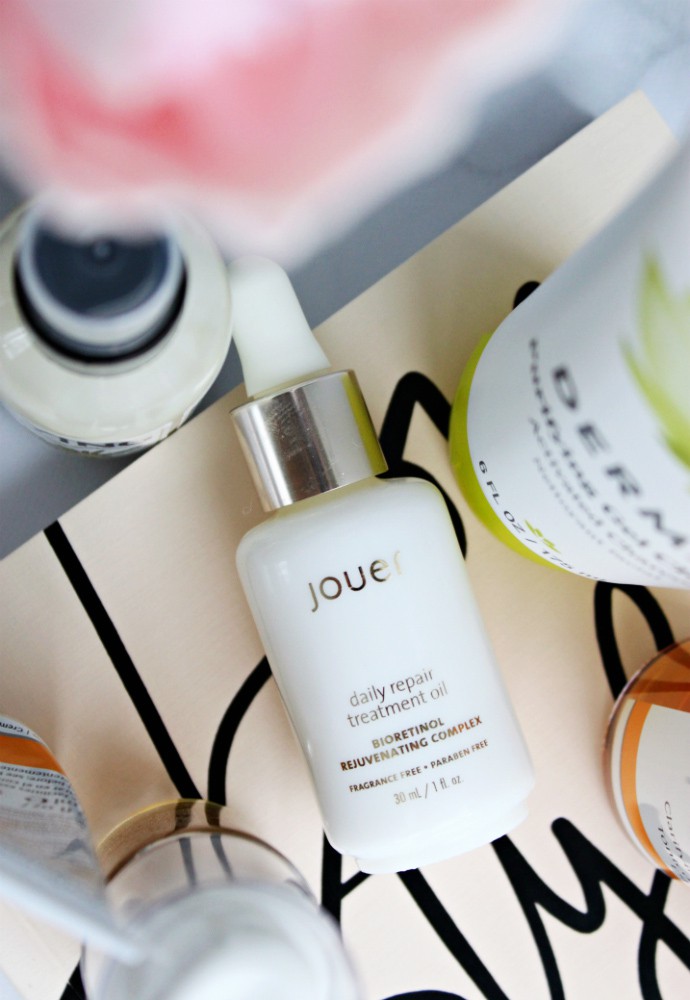
10 // Petroleum jelly, petrolatum. This ingredient is a little controversial, it can be one of the best things that happened to your skin or one of the worst. When purified correctly, petroleum jelly is a wonderful occlusive that can prevent dry and dehydrated skin from losing essential moisture and keep it supple and soft. When not properly purified, petroleum jelly can be contaminated with oil by-products, including human carcinogens and endocrine disruptors. Or, you know, cause massive breakouts on an epic scale at the very least 
- Petroleum
- Paraffin wax
- Petroleum jelly
- Petrolatum
- Mineral oil
11 // Heavy Metals [lead etc]. How in the world does one even get that stuff on their body? Easily, actually. A lot of personal care and cleaning products contain traces of heavy metals [or significant amounts, like clinical strength antiperspirants] that may later accumulate in the soft tissue. You can find them in nasal sprays, shampoo, antiperspirant deodorants, lipstick etc… A lot of companies make lead-free lipsticks, so I wouldn’t have any issues finding a few that I like, but I am still on the quest to find the perfect aluminum-free deodorant. Hopefully, we can find it together! There has been a lot of talk about the potential dangers of aluminum in personal care products. Aluminum is currently being blamed for many things, from contributing to Alzheimer’s to kidney disease and even breast cancer. While there is no definite conclusion supporting or disproving those accusations, it’s always nice to be an informed consumer and weigh in your options.
Note: I know I used to talk about aluminum-free deodorants on this blog a lot, but recently I had to switch back to aluminum antiperspirants because of hormonal changes that made my body produce more sweat. Like, three times more at least, so I literally had no other [non-invasive] choice
12 // Ethylene oxide, 1,4 dioxane. Ethylene oxide is the E part in SLES, it’s used to ethoxylate household chemicals to make them less hazardous, with moderate success. It is listed as a “high hazard” compound in EWG database. 1,4 dioxane is a byproduct of ethylene oxide, which is also considered hazardous by EWG. It’s listed in CDC database as a potential human carcinogen, with links to studies that suggest it may cause damage to the brain, central nervous system, kidneys, and liver. To avoid products potentially contaminated with 1,4 dioxane, watch out for Oxynol and many of the “eths”, like Polyethylene, Ceteareth, PEG, etc. Here’s a more complete list for your reference.
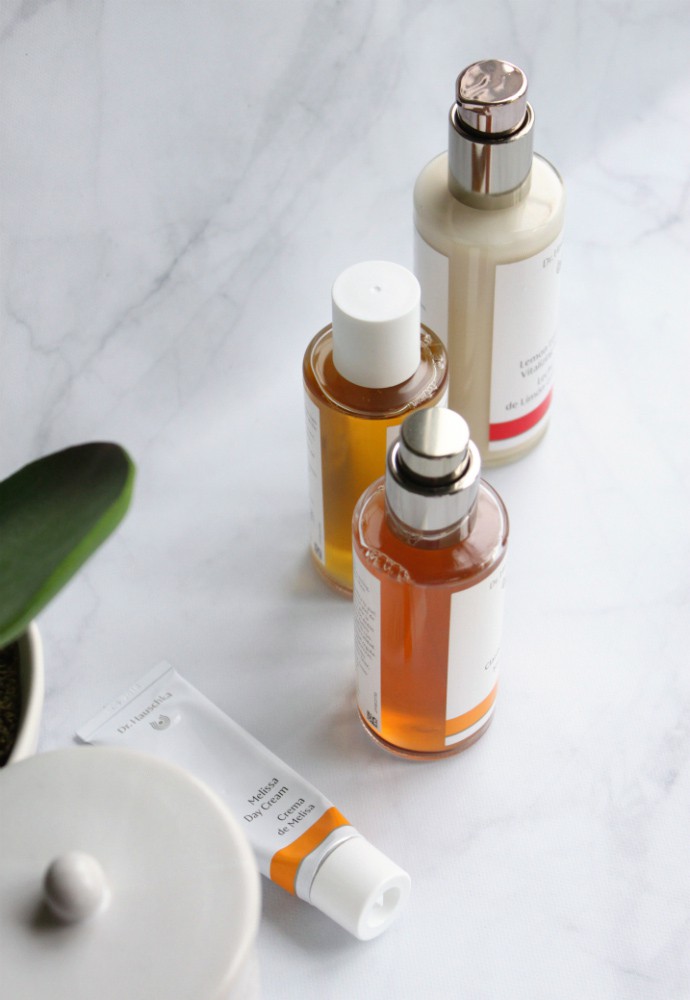
How to eliminate toxic beauty products from your routine?
This list of toxic beauty ingredients to avoid is only 12 names long, but it’s already overwhelming, especially if you have a lot of skincare like I do. I spent about an hour trying to figure out how to eliminate toxic beauty products, and found a pretty effective method. Basically, start with just one ingredient and sift from there. For me, the most important offender is formaldehyde and formaldehyde releasers, so I went through my entire pile of skincare and makeup and set aside products that don’t contain any of those. Going down the list, I got rid of phthalates, then talc, oxybenzone, SLES, and the rest, one by one. It takes a while, but your pile will keep getting lighter and lighter each round when you go through it, one ingredient at a time.
Honestly, if you want to skip all the work, just go by the mantra “simple is better”. These days I mostly opt in for products with minimal ingredients because I am just too lazy to read the entire label for the red flags, haha! 
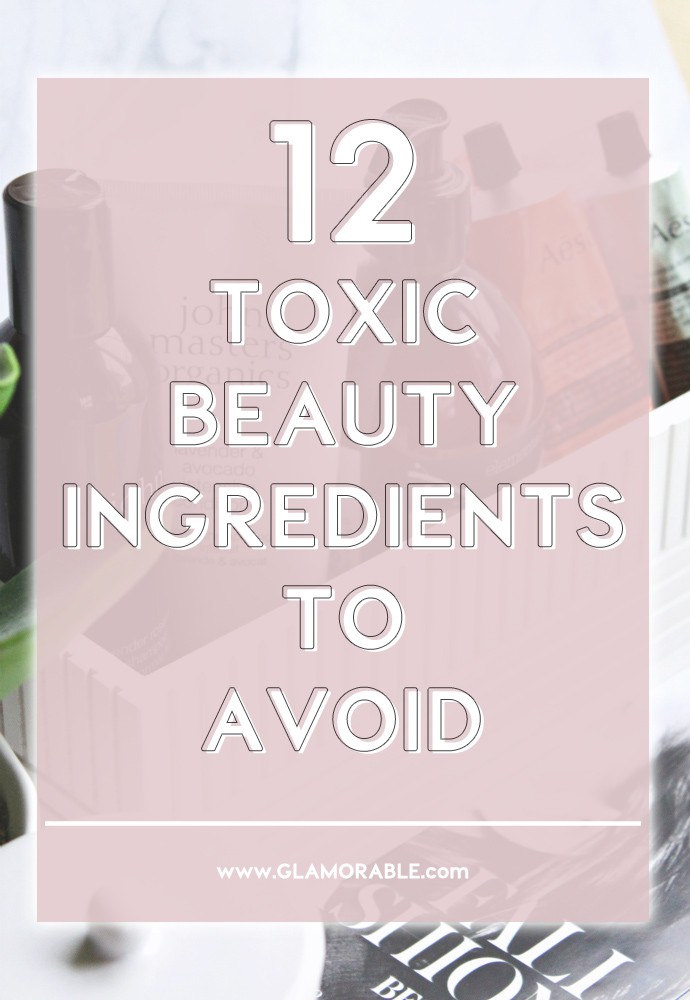
P.S.: I would like to stress that I am fully aware that I used products with ingredients considered to be toxic in green living community, and promoted many of them on this blog. I am by no means trying to be a hypocrite here by singing a different tune when it suits me. I just think that going “green & clean” for a month will help me gain a new perspective. I won’t lie, I’m still skeptical that at the end of April I will suddenly decide to make a permanent switch, but at the same time, I’ll never know until I try.
Do you have any favorite natural or non-toxic beauty brands? Are there any ingredients you avoid in personal care products, either by choice or due to sensitivities? Let me know in the comments below!
Disclosure: For informational purposes only and not intended to be medical advice. Consult your doctor and/or dermatologist, or call the company in question if you’d like to know more about the ingredients and how they may affect your health.


What a fantastically compiled list of things to avoid! I’m so glad to see you mention natural isn’t necessary better, especially your reference to arsenic. I actually had a massage therapist once tell me to add arsenic to water and shake it a bazzilion times before DRINKING in- the arsenic would have disappeared and left a beneficial imprint on the water or something crazy like that. Definitely the last time I saw her!
Oh yikes, that must have been quite an experience! Some of my relatives are actually into that sort of thing – tinfoil hats and all – and I just quietly roll my eyes when they aren’t watching And yes, I know there are some people who are totally adamant that natural is better, but that certainly doesn’t seem to be the case for me. I am already missing my skincare with lab-made synthetic active ingredients that nothing found in nature can replicate.
And yes, I know there are some people who are totally adamant that natural is better, but that certainly doesn’t seem to be the case for me. I am already missing my skincare with lab-made synthetic active ingredients that nothing found in nature can replicate.
Your article is wonderful and extremely helpful. I’m looking forward to following your journey since there are many products I probably should be eliminating too.
Thank you for support Marcia! I kept hearing so many things about “natural is better”, and figured why not try it for myself? I am a creature of science though, and honestly, I feel like for a truly effective routine I need the best of both worlds.
I’m with you, parabens aren’t an issue in my opinion. Sulfates, however, cause my scalp to flake like crazy. Synthetic fragrances KILL my skin. I break out. So bad. Thank you for doing research on these ingredients and not just buying into the hype / scare messaging that I see people doing.
I know how you feel, I always roll my eyes when I hear yet another person preach about the dangers of parabens as if they are facts, while promoting products with far worse ingredients. Hype and misinformation are so contagious.
That’s why I put a disclaimer that while I will be avoiding parabens for the next month, it is not because I personally believe that they pose any risk to my well-being.
Wow! This is a quick reality check for me to actually look at what ingredients I am exposing my skin to! I know I’m guilty on the alcohol ingredient.
Trust me, girl, it’s a slippery slope down the rabbit hole, although some ingredients are far worse than others. This is going to be my most long-lasting beauty experiment.
Thanks for this great post!!
You’re welcome!
I agree with you about parabens, in the grand scheme of things I’m fine with that as a preservative and preservatives overall aren’t necessarily a bad thing
Oh, absolutely, there are far FAR worse things than parabens, and yet they get the short end of the stick. People talk about the paraben scare as if those are facts, which they are not.
Great information. I’m bookmarking it and I’m going to check what I’m using against it. I’m a little afraid of how much I’ll throw out but I’m also very thankful to you to bring this to our awareness.
Don’t beat yourself up over it, Shelley. Some of these ingredients are far worse than others, and some are just controversial and I am excluding them only because the green beauty community demands that sacrifice haha
I really should pay more attention to the ingredients of my products! This is a helpful list for sure.
That’s where I’m at, too. I am pretty sure I will be back to using products that I loved before the experiment, but I will pay better attention to what’s in them.
Thanks for the helpful list!
You’re welcome!
Such a great post! Thank you for this.
Happy to share!
I avoid sulphates, parabens and phthalates (and formaldehyde), but did not know about the others. Very informative post! TBH, I’m guilty of not really looking for translations of K-beauty labels.
Same here, I rarely look at the translations of my kbeauty products, but now I will do my best to change that.
I can’t wait to hear more about how this goes for you. I try to make good choices, but have been a little lax lately. And my favorite top coat contains toluene…
This is going to motivate me to make some cleaner beauty choices – I’m excited!
I had to set aside my fave Seche Vite for this, because of Toluene, and now my nails take forever to dry So far the experiment is a moderate success. I can definitely see myself switching to green makeup in the future. Skincare, not so much, because nothing in nature can replicate the state of the art synthetic anti-aging molecules that can only be made in the lab.
So far the experiment is a moderate success. I can definitely see myself switching to green makeup in the future. Skincare, not so much, because nothing in nature can replicate the state of the art synthetic anti-aging molecules that can only be made in the lab.
I do see a lot of conflicting reports about sulfates. While not amazing for you, they aren’t as awful as people think.
There are a lot of controversial ingredients on my list, and I included them because they are some of the most talked-about in the green beauty community. You bet that I will be back to using products with parabens when this is over
That is a very informative post, thanks!
You’re welcome, Shilpa!
Always good to know what’s in the products we use. Thanks for the reminders and information.
You’re welcome! Although some of these are controversial, I felt like I had to include them on the list. Otherwise it would not be a very good experiment
GReat informative post, a lovely read x
Thank you for checking it out!
Wow!!!!! So much valuable info in one post!!! Thanks!!!
Thank you for reading, I hope this was helpful!